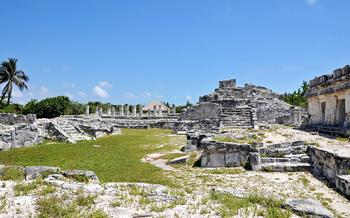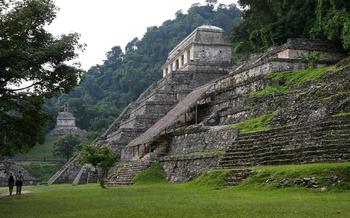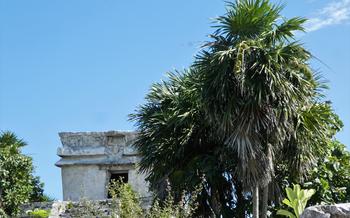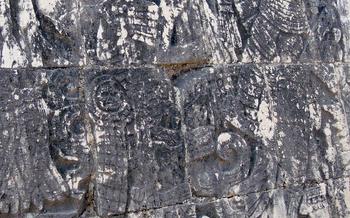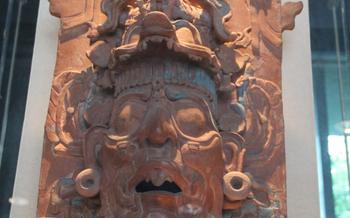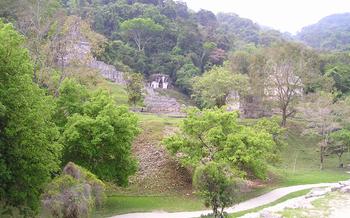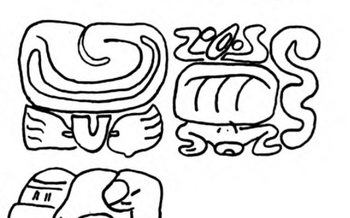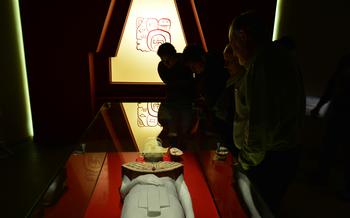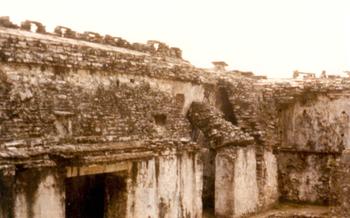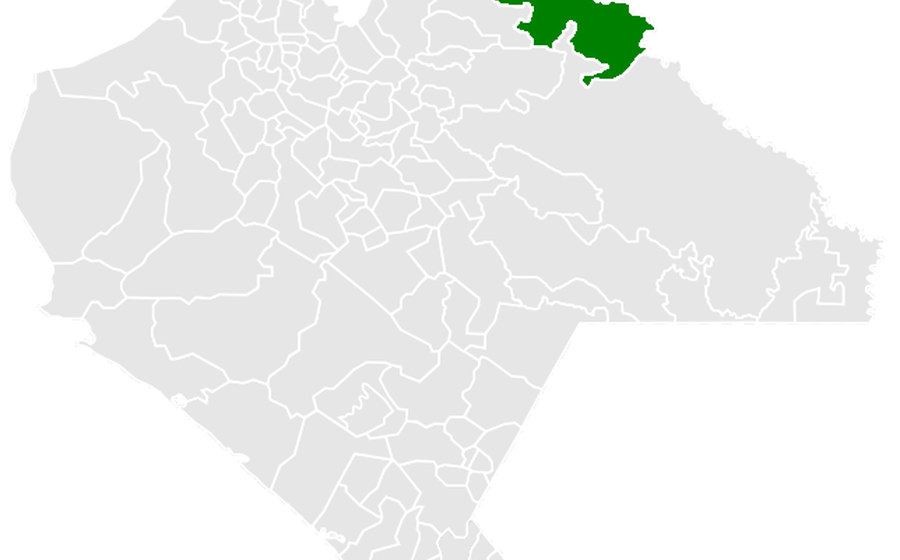
Cascadas de Mactuni Ha
- Palenque and the Cascadas de Mactuni Ha
- Getting to the Cascadas de Mactuni Ha
- The Hike to the Waterfalls
- The Cascadas de Mactuni Ha
- Other Activities at the Cascadas de Mactuni Ha
- Tips for Visiting the Cascadas de Mactuni Ha
- The Maya and Water
- Palenque, the City of Water
- The Cascadas de Mactuni Ha in Popular Culture
- The Conservation of the Cascadas de Mactuni Ha
- The Future of the Cascadas de Mactuni Ha
- My Personal Anecdote: A Journey of Discovery and Wonder
- Insider Tip: Secret Swimming Hole
Palenque and the Cascadas de Mactuni Ha
The ancient Maya city of Palenque, located in the southern Mexican state of Chiapas, is a UNESCO World Heritage Site renowned for its impressive architecture, rich history, and natural beauty. One of the most popular attractions in Palenque is the Cascadas de Mactuni Ha, a series of stunning waterfalls located just a short distance from the city.
Water in Maya Culture
Water was sacred to the Maya, who believed that it was the source of all life. They worshipped numerous water deities, including the rain god Chac, and built elaborate water management systems to ensure a steady supply of water for agriculture and other purposes. The Maya also believed that water was a portal to the underworld, and many of their sacred ceremonies and rituals were performed in or near water sources.
Discovery of the Waterfalls
The Cascadas de Mactuni Ha were first discovered in the early 1970s by a group of local farmers. The farmers were searching for a new water source for their crops when they stumbled upon the waterfalls. They were amazed by the beauty of the falls and quickly realized that they had discovered something special.
Archaeological Significance
The Cascadas de Mactuni Ha are not only a natural wonder, but they also have significant archaeological importance. In the 1980s, archaeologists discovered several ancient Maya ruins in the area surrounding the waterfalls. These ruins include a number of temples, plazas, and other structures. The ruins suggest that the area around the waterfalls was once a major Maya ceremonial center.
Getting to the Cascadas de Mactuni Ha
The Cascadas de Mactuni Ha are located about 25 kilometers (15 miles) from the city of Palenque. The waterfalls are situated in the middle of the jungle, and there are no roads or highways that lead directly to them. The most common way to reach the waterfalls is to take a guided tour from Palenque. These tours typically include transportation to and from the waterfalls, as well as a guide who can provide information about the history, culture, and natural history of the area.
For those who prefer to travel independently, it is possible to reach the waterfalls by public transportation. From Palenque, take a bus to the town of Lacanjá Chansayab. From Lacanjá Chansayab, take a taxi or colectivo to the village of Mactuni Ha. From Mactuni Ha, it is a short walk to the waterfalls.
The cost of admission to the Cascadas de Mactuni Ha is $10 USD per person. This fee includes access to the waterfalls as well as the use of the hiking trails and camping facilities.
The Hike to the Waterfalls
The hike to the Cascadas de Mactuni Ha is a relatively easy one, but it can be challenging if you are not used to hiking in the jungle. The trail is well-maintained and mostly flat, but there are a few steep sections that can be slippery when wet. The hike is about 2 kilometers (2 miles) each way and takes about an hour to complete.
Along the trail, you will be surrounded by lush jungle vegetation, including towering trees, giant ferns, and colorful flowers. You may also see some wildlife, such as monkeys, toucans, and butterflies. The trail is also home to a variety of insects, so be sure to wear insect repellent.
If you are not sure about hiking on your own, you can hire a guide from Palenque. Guides can help you find the trailhead, navigate the trail, and identify the different plants and animals that you see along the way.
The Cascadas de Mactuni Ha
The Cascadas de Mactuni Ha are truly a sight to behold. The water cascades down from a height of over 30 meters (100 feet) into a large pool below, surrounded by lush green jungle vegetation. The waterfalls are at their most impressive during the rainy season, when the water volume is at its peak. The surrounding jungle is home to a variety of wildlife, including monkeys, birds, and insects. Visitors can swim in the pool below the waterfalls or have a picnic lunch on the rocks. There are also several hiking trails in the area, which lead to other nearby waterfalls and Maya ruins.
Other Activities at the Cascadas de Mactuni Ha
In addition to swimming and picnicking, there are several other activities that you can enjoy at the Cascadas de Mactuni Ha.
Camping
If you want to extend your stay at the waterfalls, you can camp at the nearby campground. The campground is located in a beautiful jungle setting and offers basic amenities such as showers, restrooms, and picnic tables.
Birdwatching
The area around the waterfalls is home to a variety of birds, making it a great place for birdwatching. Some of the birds that you might see include toucans, parrots, and woodpeckers.
Hiking to Other Nearby Waterfalls
There are several other waterfalls located near the Cascadas de Mactuni Ha. If you are feeling adventurous, you can hike to some of these other waterfalls. The hike to the Cascadas de Agua Azul is particularly popular.
Visiting the Nearby Maya Ruins
The Cascadas de Mactuni Ha are located near the Maya ruins of Palenque. If you are interested in history, you can visit the ruins after your hike to the waterfalls. The ruins are a UNESCO World Heritage Site and are home to some of the best-preserved Maya architecture in the world.
Tips for Visiting the Cascadas de Mactuni Ha
To make the most of your visit to the Cascadas de Mactuni Ha, here are a few tips to keep in mind:
-
Best time to visit: The best time to visit the waterfalls is during the dry season (November to April) when the water levels are lower and the trails are less muddy. During the rainy season (May to October), the waterfalls are more powerful and impressive, but the trails can be slippery and difficult to navigate.
-
What to bring: Be sure to bring comfortable hiking shoes, plenty of water, snacks, a hat, and sunscreen. You may also want to bring a swimsuit and towel if you plan on swimming in the waterfalls.
-
Safety precautions: The trails to the waterfalls can be slippery and uneven, so be sure to wear sturdy shoes and watch your step. Be aware of your surroundings and be careful not to get too close to the edge of the waterfalls.
-
Leave no trace: Please be respectful of the environment and leave no trace of your visit. Pack out all of your trash and do not disturb the wildlife.
The Maya and Water
The Maya civilization, which flourished in Mesoamerica from around 2000 BC to 1521 AD, had a profound understanding of the importance of water. Water was essential for their survival, providing them with drinking water, irrigation for their crops, and a means of transportation. The Maya also believed that water was sacred, and they associated it with fertility, life, and death.
The Maya worshipped a number of water deities, including the rain god Chaac, the goddess of cenotes Ix Chel, and the god of the underworld Ah Puch. They also performed a number of water rituals, such as rainmaking ceremonies and pilgrimages to sacred cenotes.
The Maya were also skilled engineers, and they developed a number of water management systems. These systems included dams, canals, and reservoirs, which allowed them to store and distribute water for irrigation, drinking, and other purposes.
The Maya's understanding of water is reflected in their art and architecture. Water is often depicted in Maya art, and many Maya buildings were constructed around water sources. For example, the city of Palenque was built around a series of rivers and waterfalls, and the city of Chichén Itzá was home to a massive cenote that was used for religious ceremonies.
Water was essential to the Maya civilization, and their understanding of water was a key factor in their success.
Palenque, the City of Water
Palenque is a city in southern Mexico known for its abundance of water. The city is located in a lush valley that is surrounded by rivers, streams, and waterfalls. The Maya people who inhabited Palenque were well aware of the importance of water, and they built a complex system of canals and reservoirs to manage the water resources.
Water was used for agriculture, drinking, bathing, and religious ceremonies. The Maya also believed that water was a source of spiritual power, and they built many temples and shrines near water sources.
The most famous of Palenque's water features are the Cascadas de Mactuni Ha, a series of waterfalls that are located just outside the city. The waterfalls are a popular tourist destination, and they offer visitors a glimpse into the Maya's relationship with water.
Water was essential to the Maya civilization, and Palenque is a city that demonstrates the importance of water in Maya culture. The Maya's use of water for agriculture, drinking, bathing, religious ceremonies, and spiritual power shows that they were a people who understood and respected the importance of water.
The Cascadas de Mactuni Ha in Popular Culture
The Cascadas de Mactuni Ha have gained a significant presence in popular culture, capturing the attention of filmmakers, writers, and musicians. The waterfalls have been featured in several movies and TV shows, including the popular Mexican telenovela "Corazón Salvaje" (1993) and the American action film "Romancing the Stone" (1984). In literature, the waterfalls have inspired poems, short stories, and even a novel. The Mexican writer Carlos Fuentes included a vivid description of the waterfalls in his novel "La Muerte de Artemio Cruz" (1962). In music, the Cascadas de Mactuni Ha have been immortalized in songs by Mexican singer-songwriter Juan Gabriel and Guatemalan singer-songwriter Ricardo Arjona. The waterfalls' stunning beauty and rich cultural significance have made them a popular subject for artists of all kinds.
The Conservation of the Cascadas de Mactuni Ha
The Cascadas de Mactuni Ha are a fragile ecosystem that faces a number of threats, including pollution, climate change, and unsustainable tourism.
Pollution is a major problem in the area, as the waterfalls are located near a number of small villages and agricultural fields. Runoff from these areas can pollute the water and harm the wildlife that lives in the area.
Climate change is also a major threat to the waterfalls. As the climate changes, the amount of rainfall in the area is likely to decrease, which could lead to the waterfalls drying up.
Unsustainable tourism is another threat to the waterfalls. If too many people visit the waterfalls, it can damage the trails and pollute the water.
Efforts are being made to conserve the Cascadas de Mactuni Ha. The Mexican government has declared the area a protected natural area, and a number of conservation organizations are working to protect the waterfalls and the surrounding jungle.
Sustainable tourism is an important part of the conservation effort. By visiting the waterfalls in a responsible way, tourists can help to protect this special place.
The Future of the Cascadas de Mactuni Ha
The future of the Cascadas de Mactuni Ha is uncertain. On the one hand, the waterfalls are a popular tourist destination and a source of income for the local community. On the other hand, the waterfalls are threatened by climate change and unsustainable tourism.
Plans for future development include the construction of a new visitor center and improved hiking trails. These developments will help to protect the waterfalls and make them more accessible to visitors. However, it is important to ensure that these developments are done in a sustainable way.
Climate change is a major threat to the Cascadas de Mactuni Ha. The waterfalls are fed by a river that is dependent on rainfall. If the climate becomes drier, the river will not be able to support the waterfalls.
Unsustainable tourism is another major threat to the Cascadas de Mactuni Ha. If too many people visit the waterfalls, the surrounding environment will be damaged. It is important to promote sustainable tourism practices, such as staying on designated trails and not littering.
The future of the Cascadas de Mactuni Ha depends on the actions of the local community, the government, and tourists. By working together, we can protect this beautiful natural wonder for generations to come.
My Personal Anecdote: A Journey of Discovery and Wonder
As a travel blogger, I've had the privilege of visiting some of the most awe-inspiring places on Earth. But my trip to the Cascadas de Mactuni Ha stands out as one of my most memorable experiences. I had heard tales of these hidden waterfalls tucked away in the lush jungle of Palenque, and I was eager to witness their beauty for myself.
Upon arrival, I was immediately captivated by the sheer scale and grandeur of the falls. The water cascaded down from a great height, creating a mesmerizing curtain of mist that shimmered in the sunlight. The surrounding jungle was alive with the sounds of birdsong and the gentle rush of water, creating a symphony of nature that filled the air.
I embarked on the hike to the base of the waterfalls, eager to experience their full majesty. The trail was challenging but rewarding, leading me through dense jungle terrain and across slippery rocks. As I approached the falls, the sound of the water grew louder, and the mist became thicker, enveloping me in a cool embrace.
Standing at the base of the waterfalls, I was filled with a sense of awe and wonder. The sheer power and beauty of nature were on full display, and I couldn't help but feel humbled by the experience. I spent hours marveling at the falls, taking in their beauty and soaking in the tranquility of the jungle surroundings.
My visit to the Cascadas de Mactuni Ha was a reminder of the incredible wonders that nature has to offer. It was a journey of discovery and wonder, and I left feeling refreshed, inspired, and forever grateful for the opportunity to experience such a magical place.
Insider Tip: Secret Swimming Hole
For those seeking a secluded swimming spot, there's a hidden gem tucked away near the Cascadas de Mactuni Ha. Follow the main trail past the main waterfalls, and you'll come across a sign pointing to a side path. Take this path, and after a short walk, you'll reach a smaller waterfall with a crystal-clear pool at its base. This is the perfect spot to take a refreshing dip and escape the crowds. Be sure to bring a swimsuit and towel, as there are no changing facilities.
